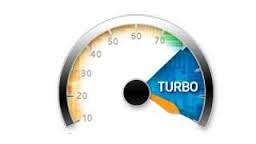Differences Between Intel Core i3, i5 and i7 CPUs
When Intel changed the naming scheme of it’s CPUs they altered the way the consumers thought of processor performance. Prior to Core i3, i5 and i7 CPUs, folks tended to think clock speed or frequency was everything. While clock speed is still published today, there are many factors that determine a CPU’s strength.

|
Most important is how many cores your CPU has. Core i3 processors have 2 cores while Core i5 and i7 CPUs have 4 cores. I know what you are thinking. ‘Isn’t a Core i3 CPU really just a renamed Core 2 Duo?” Yep, pretty much. An i3 CPU is built on the same principle as the old Core 2 Duo processors, only with hyper-threading (see below). But if you are just answering your email and surfing the web, that may be all you need. |
More GHz does not always mean more power. Think of the clock speed as the heart rate of the processor. A Core i3 CPU may have a higher clock speed or heart rate than an i7. And a hummingbird has a heart rate 40 times that of an elephant. But there is no question that an elephant is more powerful than a hummingbird and that an i7 CPU (of the same generation) is more powerful than an i3 CPU. But if you raise the elephant’s heart rate from 30 to 35 you will get more performance with more GHz (see TurboBoost below).
|
|
CACHE matters. CACHE is very fast memory placed directly on the CPU. It allows small amounts of commonly used data to be readily available. This prevents the CPU from doing extra work (saving energy) and gets the needed data to the user more quickly. Typically, a Core i5 CPU has 50% more CACHE than an i3 CPU and an i7 has double the CACHE of the i3. In the world of CPUs, CACHE is King. |
Hyper-threading is faking it. Hyper-threading will allow your Core i3 CPU to trick Windows into thinking you have a quad core processor when you don’t. Years ago we would have to put a Pentium 166MHz MMX CPU into a motherboard temporarily in order to load some applications (PowerDVD comes to mind). That was because these applications were looking for MMX architecture. Once we were done with the install we could replace the customer’s CPU and they could watch movies on their computer. Intel has done the work for us this time and will trick the computer into believing it has what is needed to get the job done. It’s like putting a V8 emblem on your Chevy Spark. You may fool a few people, but you won’t win the race.
|
|
Turboboost (Not to be confused with the old turbo button on your 486DX2 66) is like giving that elephant a shot of adrenaline. It’s still the same elephant but for a little while he/she is burning more calories and running just a little faster. Intel defines Turboboost as ‘dynamic overclocking”. I can live with that. Any of you remember turning turbo off of your 486DX2 machine so you could play Frogger without the frog leaping across the road all at once and inevitably being squashed by a semi? Or am I just dating myself? |
Rick Culleton
CEO
Discount Electronics



